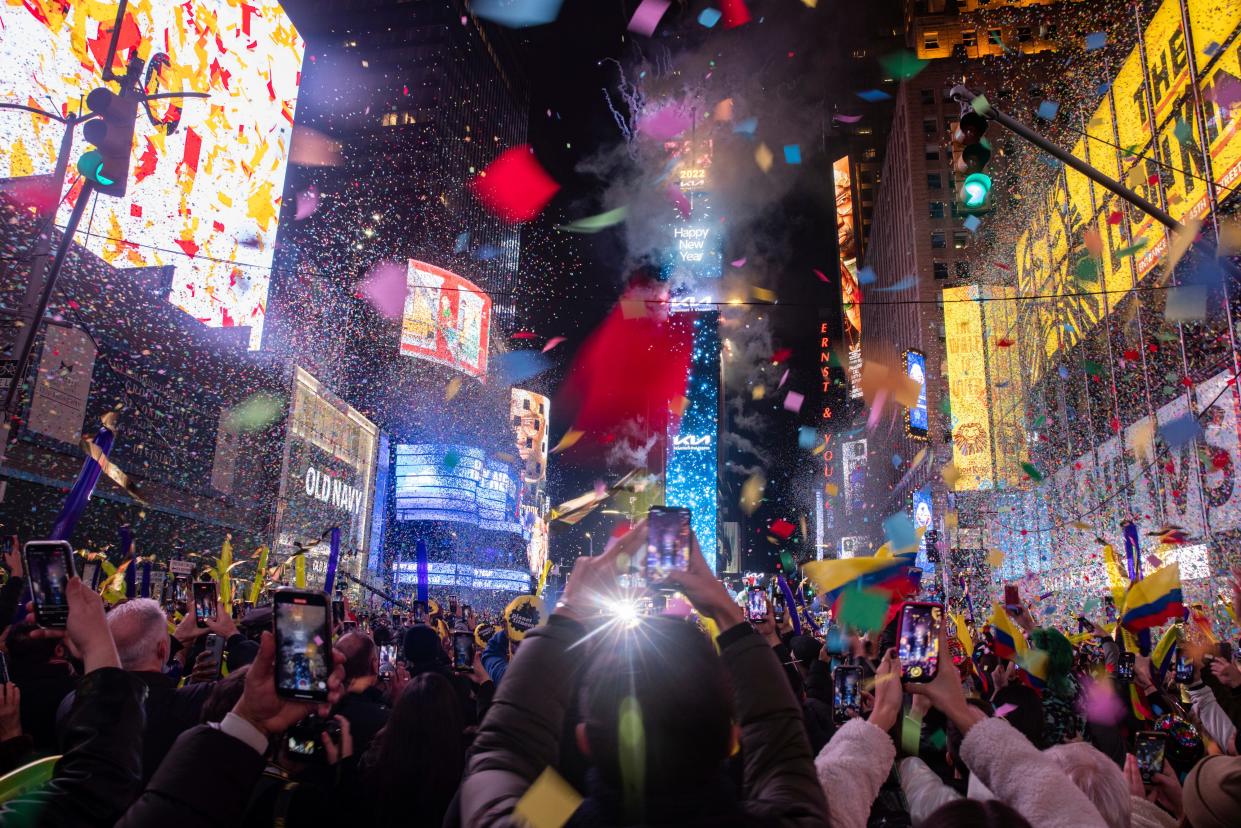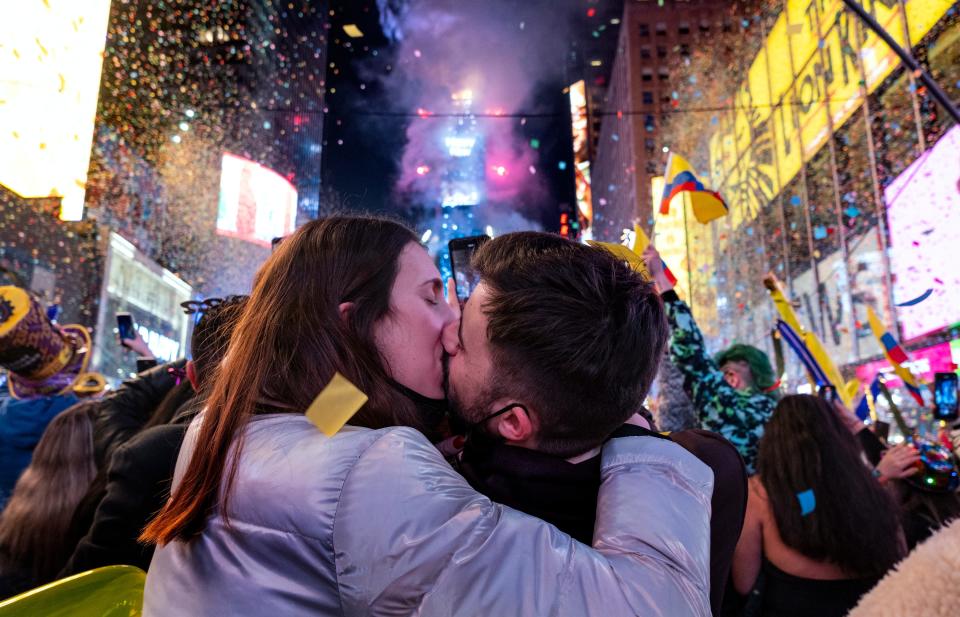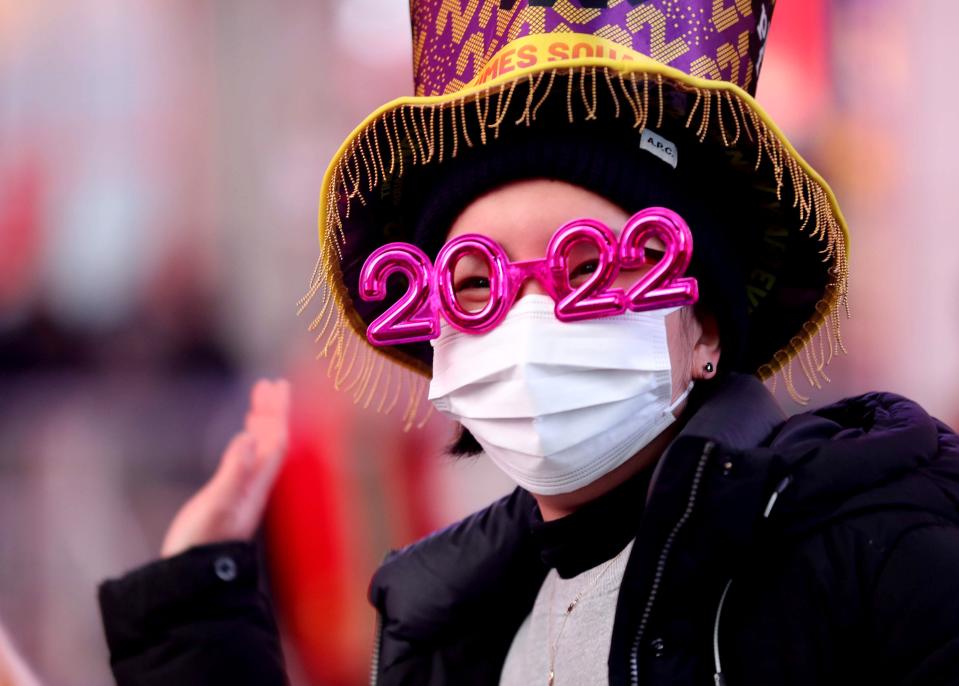TEXAS HISTORY MINUTE: The history of new year observances

A weary world looks ahead to a new year. New Years observances are usually a time of reflection over the past year as news organizations replay the top stories of the previous year and poke fun at the failed predictions for the year while millions of people look back on their experiences of the previous year and ponder their expectations for the year ahead.
The year 2022 will be noted for many things, especially February 22, a day, which will happen to be a Tuesday, which will be all twos: 2/22/22. Millions of people will make new years resolutions, some will be kept and others will fall by the wayside. The most common resolutions for 2021 were: losing weight/getting into shape, saving more money, traveling more, making new friends, and finding a new/better job. Public opinion polls for new years resolutions for 2022 are not that different: getting into shape, spending more time with loved ones, and saving money.

Observances of the new year date back thousands of years as ancient peoples recognized the regular shifting patterns of stars at night and the sun in the day and their connection to particular seasons. Many ancient cultures would mark the winter solstice, December 21, as the beginning of the year as the days started getting longer and spring approached. In some societies, the vernal equinox, the beginning of spring in March, was seen as the beginning of the year as well as the time to begin planting. The Babylonians were known as early as 2600 BC to mark this day with celebrations and new year’s resolutions.
The earliest observances of January 1 for the beginning of the year began with the Romans around 713 BC. The Romans named the first month of their lunar calendar year January after the Roman god Janus, who supposedly was the god of time and also the god of beginnings and transitions. According to legend, Janus had two faces, one looking into the past and the other looking into the future, reflecting Romans looking back and looking forward with the new year’s revelry.
During the Middle Ages, New Years celebrations were largely pushed aside in favor of religious observances, such as Christmas. Pope Gregory XIII restored January 1 as the official observance of New Year’s Day in 1582. In most countries throughout the world, January 1 is an official holiday to mark the beginning of the new year. Even many non-western countries will observe January 1 as New Year’s Day.
The Chinese New Year, however, will not start until February 1. Under the Chinese Zodiac system dating back many centuries, 2022 will mark the Year of the Tiger. The year 2021 was the year of the ox, a symbol of strength; and 2020 was the Year of the Rat, an animal known as a trickster in Chinese mythology. In China, the tiger is a symbol for strength, bravery, and independence. In China, fireworks are set off to mark the new year and to also scare off demons and forces of darkness. Variations on these new years traditions are found in South Korea, Japan, and Cambodia.

Similarly, February 1 will also mark the traditional Vietnamese New Year, known as Tet. The Vietnamese lunar calendar is very similar to the Chinese calendar. By tradition, a great feast is prepared, family reunions are held, and many celebrations are held in cities across the country. Many in Vietnam see Tet as the beginning of spring as well. Cleaning the home is also part of the traditional observances to symbolically clean out the bad spirits from the previous year.
In Orthodox Christian nations, the Julian calendar is still used for religious observances. Under this calendar, the new year does not begin until February 14. This is most commonly observed in nations such as Russia and Ukraine.
Different types of food are also associated with New Year’s celebrations. In India, rice is eaten for prosperity in the new year. In parts of Europe and the United States, leafy green vegetables such as spinach are seen by many as symbolizing money and prosperity for the new year. In the American South, black-eyed peas are eaten for good luck. In Turkey, pomegranates are eaten for luck as a symbol of life and fertility.

There are many other superstitions for luck surrounding celebrations. In France, the weather on New Year’s Day is supposed to be an omen for the year’s weather. In Denmark, unused pates are smashed against doors to ward off bad luck. Brazilians wear white for good luck
To this day, New Year’s Day is still a time to reflect on the past and look forward to the days ahead. And the world hopes for a worry-free year with 2022. Ahead lies a calendar filled with possibilities.

Ken Bridges is a Texas native, writer and history professor. He can be reached at drkenbridges@gmail.com. The views and opinions expressed here are the author’s own and do not necessarily reflect those of the Herald Democrat.
This article originally appeared on Prosper Press: TEXAS HISTORY MINUTE: The history of new year observances

